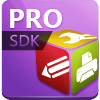 Save
Save
The Save properties determine the folder in which documents are stored, the name of documents and further options that relate to the saving of documents. Please note that properties are case-sensitive:
NAME
|
VALUES
|
DEFINITION |
SaveType |
0 (pdfSaver) 1 (AppendToLast) 2 (Save) 3 (JustEmail)
|
Specifies the action when documents are spooled:
0 (pdfSaver) specifies that pdfSaver (the document-creation application within the PDF-XChange Drivers API) displays the Job Management window, where the desired action can be specified.
1 (AppendToLast) appends new documents to the last job in the jobs list. pdfSaver can then be used to create a PDF file from the job.
2 (Save) generates and saves the PDF file from the printed document with the properties defined in this section.
3 (JustEmail) creates the PDF file and emails it using the properties defined in the EMail section.
Default value: 2 (Save)
|
ShowSaveDialog |
If this property is True then pdfSaver will display the Save As dialog box in order to facilitate saving. If the Save As dialog box is cancelled then the PDF file creation will also be cancelled.
Default value: True
|
|
Path |
String |
Defines the path where documents are saved. If this property is an empty string then the My Documents folder will be used.
Default value: empty string
|
File |
String |
Defines file name of the new document. This name can contain macros and a path. If this property contains a path then it will used instead of the path specified in Path property.
Default value: %[DocName]
|
StripPath |
Defines how the %[DocName] macro value is calculated. If this property is True and the document name passed from the printing application contains the path then it will be stripped when the %[DocName] property is assigned.
Default value: False
|
|
WhenExists |
0 (ShowWarning) 1 (Overwrite) 2 (AutoNumber) 3 (Append) 4 (InsertBefore) |
Specifies the action taken when a file is saved and the name specified in the Path and/or File properties already exists.
0 (ShowWarning) launches a dialog box in which the user can select the action taken.
1 (Overwrite) overwrites the existing file.
2 (AutoNumber) uses the existing name and appends a numeric value to the new file. The AutoNumber.Start and AutoNumber.NumDigits properties (see below) can be used to format numbering.
3 (Append) adds the new file at the end of the existing file.
4 (InsertBefore) adds the new file as the beginning of the existing file.
Please note that these options are not available when the PDF/A format is used.
Default value: 0 (ShowWarning)
|
AutoNumber.Start |
0 - 999999 |
Defines the start number when the 2 (AutoNumber) property is used.
Default value: 1
|
AutoNumber.NumDigits |
1 - 6 |
Defines the number format when 2 (AutoNumber) is used. The number of digits selected defines the minimum number of digits used. For example if 3 is selected and the 2 (AutoNumber) property is set to 1 then numbering will start at 001.
Default value: 3
|
RunApp |
Specifies if new documents are opened after they are printed.
Default value: True
|
|
RunCustom |
Defines the application used to open new documents. If set to True then the application specified in the AppName property will be used. If set to False then the default PDF application will be used. This property is used only when RunApp is set to True.
Default value: False
|
|
AppName |
String |
This property is used only when RunApp and RunCustom are set to True. It designates the application used to open files. The value of this property is the fully-qualified path name of the application.
Default value: empty string
|
AppParams |
String |
This property defines the parameters passed to the application specified in the AppName property when PDF files are opened. The string %f represents the full path name of printed files.
Default value: %f
|